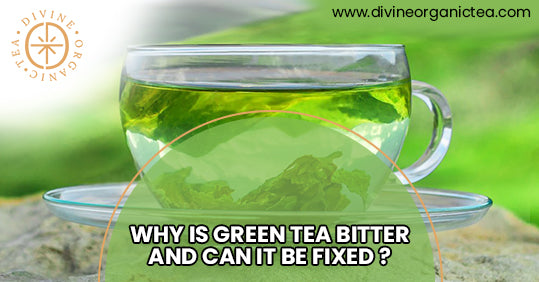Why Is Green Tea Bitter And Can It Be Fixed?
Many people refuse gentle and healthy varieties of green tea because they do not like bitterness and astringency. Why is green tea bitter? There are several reasons, ranging from the quality of the raw materials to brewing errors.
What Raw Materials Give Green Tea Bitterness
The tea leaf contains a complex of natural chemicals. Among them are polyphenols and theophylline. The first (catechins, tanning compounds) impart astringency to the drink, the second makes the taste bitter.
The level of bitterness and astringency depends primarily on the quality of the raw materials: the type of tea bush, the time and height of the harvest, the age and size of the tea leaf.
Plant type. Bitter Chinese Tea is rare. This is because the leaves and buds of the Chinese Sinensis tea bush give a softer and more delicate flavor. Indian varieties from Assamica are tougher and contain more bitterness chemicals. An exception is the bitter Chinese tea Kudin, which is made from the leaves of the broadleaf holly. But in the classical sense, it is not tea, it is rather an herbal infusion with beneficial properties.
Harvest time. The more sunlight the tea leaves received, the more catechins and astringency it contains. That is why summer varieties, which usually cost less than early spring varieties, tend to taste bitter - the concentration of catechins in them is higher, and there is little sweetness. Do you like the velvety and multifaceted taste? Choose autumn tea. The high concentration of amino acids and sugars helps to muffle natural bitterness.
The height of the collection of raw materials. High altitude tea gardens receive less sunshine and the weather conditions are variable there. Therefore, there are fewer catechins in the leaves, the drink turns out to be practically devoid of astringency. If you don't like bitter tea, the Chinese hit Long Jing or any other variety grown high in the mountains will delight you. Mass teas lose in this regard.
Leaf size and age. For high-quality Green Tea in the Middle Kingdom, the upper parts of the shoots are used - the so-called flushes, a bud, and several delicate leaves. In such raw materials, there is more sweetness and amino acids, this balance the bitterness. Large and old leaves, which are harvested for cheap teas, are rich in caffeine and polyphenols, but there are fewer amino acids in them, and an unpleasant bitterness appears.
Bitterness And Astringency In Tea Due To Processing Errors
Bitter tea can appear due to violations of the processing technology.
The master should alternate between drying and tossing leaves. If this process is not controlled as expected, too much moisture remains in the raw material, the concentration of anthocyanin increases, and the astringency will be greater.
To avoid bitter tea, the Chinese master is in no hurry to interrupt the oxidation (fermentation). In green varieties, the oxidation state is minimal, if you stop the process ahead of time, the bitter notes will be intrusive. Turquoise teas (oolongs), black varieties, and Shu Pu’er usually lack bitterness because the fermentation is stronger.
Roasting also reduces caffeine and bitterness. For example, Tai Ping Hou Kui tea leaves are lightly pressed against the hot surface of the cauldron, they become flat and balanced in taste.
How To Remove Bitterness From The Tea
Green tea can be bitter and astringent, but it doesn't have to be. In this blog post, we will outline the steps you need to take in order to make a delicious green tea that no one is going to want to spit out. All of these steps are easy and simple to follow!
-Do not pour boiling water over it. Let the boiled water cool slightly, and then use that to make your tea. If you are using a teapot or other brewing device, allow for this cooling period before pouring any of the hot liquid into your vessel to steep.
-Rinse the leaves first before infusing them in boiled water; this will help remove some bitterness from green tea by neutralizing certain molecules on its surface.
-Strain out these leaves after a few minutes of steeping, but do not discard them! This is called an “infusion” and it contains many beneficial qualities as well as being delicious and soothing when cooled down enough to drink without scalding oneself too badly. You can drink this infusion or use it for other purposes, such as in a soup.
-Brew the tea by pouring water over and through the leaves, not directly on top of the leaves to avoid crushing them too much. The Chinese call this “spilling” green tea instead of steeping it; you may also try out using a bamboo whisk with these spilled portions if you prefer your drinks more frothy than flat. If you are using an infuser (such as a teapot), pour over all sides of the vessel at once then allow enough time to steep before removing from heat and straining out any remaining liquid into cups or bowls.
-Finally, enjoy! Your beverage should be deliciously fresh and not bitter at all.

